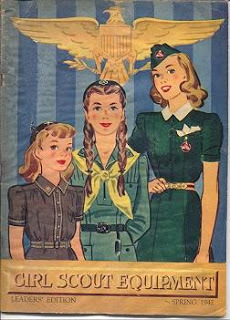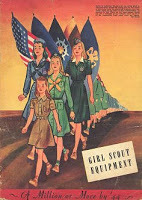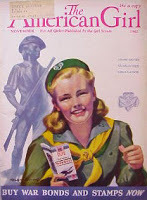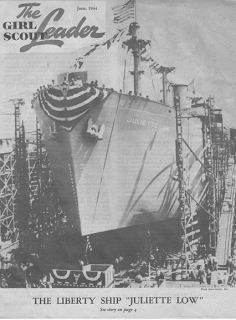Sarah Sundin's Blog, page 483
March 22, 2012
Book Beat - The Discovery by Dan Walsh
 In June of 1942, U-boats landed eight German saboteurs on US soil, at Long Island, New York and at Jacksonville, Florida. They were all captured within two weeks before any of their planned sabotage missions had been attempted, and six of the men were executed for espionage.
In June of 1942, U-boats landed eight German saboteurs on US soil, at Long Island, New York and at Jacksonville, Florida. They were all captured within two weeks before any of their planned sabotage missions had been attempted, and six of the men were executed for espionage. In The Discovery , Dan Walsh takes this fascinating sibebar of US history and crafts a compelling novel - or more precisely a historical novel within a contemporary novel.
When his beloved grandfather dies, Michael Warner inherits his home in Charleston, the typewriter on which Gerard Warner wrote dozens of bestselling novels, and an unpublished manuscript. The unpublished novel is unlike anything else his grandfather wrote - a World War II story of a German saboteur who lands by U-boat in Florida and takes the name Ben Coleman to blend in. He's not the spy he led the Nazis to believe he was, but a German-American desperate for a way home. Ben falls in love with Claire Richards - an impossible love. All deception has a way of unraveling, and Ben finds himself in a fight for his freedom and his life.
Michael is drawn in to the tale of spies and danger and romance, but certain aspects of the story prick his curiosity. As he works to solve the mystery, he learns more about himself and his dreams.
Thrilling, romantic, and intriguing, The Discovery is a suspenseful, beautifully written, and deeply satisfying story. I've thoroughly enjoyed all Dan Walsh's novels, but I'm convinced this is his best yet![image error]
Published on March 22, 2012 05:00
Today in World War II History
70 Years Ago—Mar. 22, 1942: British statesman Sir Stanford Cripps tries to persuade Gandhi to encourage India to help war effort.
Published on March 22, 2012 03:00
March 21, 2012
Today in World War II History
70 Years Ago—Mar. 21, 1942: Roosevelt signs bill making violation of Executive Order 9066 (removal of Japanese-Americans from the west coast) a federal offense.
Published on March 21, 2012 03:00
March 20, 2012
Today in World War II History
70 Years Ago—Mar. 20, 1942: Use of gas chambers begins at Auschwitz concentration camp. Gen. Douglas MacArthur arrives in Adelaide, Australia and makes "I shall return" speech, vowing to return to the Philippines.
Published on March 20, 2012 03:00
March 19, 2012
Today in World War II History
70 Years Ago—Mar. 19, 1942: Lt. Gen. William Slim takes command of British forces in Burma. Japanese begin drive in Sittang Valley in Burma, are opposed by Chinese troops.
Published on March 19, 2012 03:00
March 18, 2012
Today in World War II History
70 Years Ago—Mar. 18, 1942: President Roosevelt creates War Relocation Authority under Milton Eisenhower to remove all Japanese-Americans from west coast. Adm. Ernest King named US Chief of Naval Operations, in addition to previous role as C-in-C, US fleet.
Published on March 18, 2012 03:00
March 17, 2012
Today in World War II History
70 Years Ago—Mar. 17, 1942: Britain begins rationing fuel and electricity. Gen. Douglas MacArthur flown by B-17 from Mindanao to Australia.
Published on March 17, 2012 03:00
March 16, 2012
Today in World War II History
70 Years Ago—Mar. 16, 1942: Japanese bomb Darwin, Australia. US and Australian planes bomb Japanese shipping and installations at Lae and Salamaua, New Guinea.
Published on March 16, 2012 03:00
March 15, 2012
Girl Scouts in World War II
 This week, the Girl Scouts celebrated their 100th birthday. Founded by Juliette Gordon Low in Savannah, Georgia on March 12, 1912, the Girl Scout organization promoted character building through outdoor activities, community service, arts and crafts, and homemaking skills.
This week, the Girl Scouts celebrated their 100th birthday. Founded by Juliette Gordon Low in Savannah, Georgia on March 12, 1912, the Girl Scout organization promoted character building through outdoor activities, community service, arts and crafts, and homemaking skills.When World War II started, the Girl Scouts were well poised to take a solid role on the Home Front.
Organization
In the 1940s, the Girl Scouts had three levels: Brownies (ages 7-9), Intermediates (ages 10-14), and Seniors (ages 14-18). Troops existed throughout the United States - and even flourished in the internment camps for Japanese-Americans.
 Uniforms
UniformsThe official Girl Scout uniform of the 1940s consisted of a brown dress for Brownies, a medium green dress for Intermediates, and a darker green for Seniors. Mariner Scouts (Girl Scouts who specialized in boating and water skills) had a special blue uniform. Wartime restrictions on the use of metals led to replacing the zippers in the uniforms with buttons. Compare the catalog from 1942 above with the catalog from 1943 on the right. Badges were sewn on the sleeve, a challenging task.
 What? No Cookies?
What? No Cookies?For those of us who live for Girl Scout cookie time, one wartime sacrifice seems especially painful. Rationing and shortages of sugar and butter meant a discontinuation of Girl Scout cookies for the duration. While they were sold in 1942 and 1943, they were unavailable in 1944 and 1945. In 1944, the Girl Scouts first sold calendars on a nation-wide level to fill the funding hole.
 Wartime Activities
Wartime ActivitiesGirl Scouts were very active on the US Home Front. The girls sold war bonds, conducted scrap drives, and cultivated Victory Gardens. During the war, Girl Scouts collected 1.5 million items of clothing for war refugees. Many girls also worked as farm aides or operated bicycle courier services.
In 1942, the Girl Scouts started a hospital aide program for Senior girls. These high schoolers were trained to help in hospitals--feeding patients, performing clerical work, serving as messengers, preparing supplies and equipment, and making beds. No official uniform was provided, but many girls made smocks of green-and-white striped cloth, or wore white smocks over their Girl Scout uniforms.
 Liberty Ship
Liberty ShipTo honor the Girl Scouts, a Liberty ship was named for the organization's founder. The S.S. Juliette Low was launched on May 12, 1944 at the Southeastern Ship Yards in Savannah, Georgia, Juliette Gordon Low's hometown. The ship was christened by Margaret Gordon, the first Girl Scout and Juliette Gordon Low's niece.
Sources:
http://www.girlscouts.org (the official website of the Girl Scouts)
http://vintagegirlscout.com (a fun unofficial website with all sorts of pictures and memorabilia)
Published on March 15, 2012 05:00
Today in World War II History
70 Years Ago—Mar. 15, 1942: Norwegian resistance seizes SS Galtesund and sails to Britain.
Published on March 15, 2012 03:00



